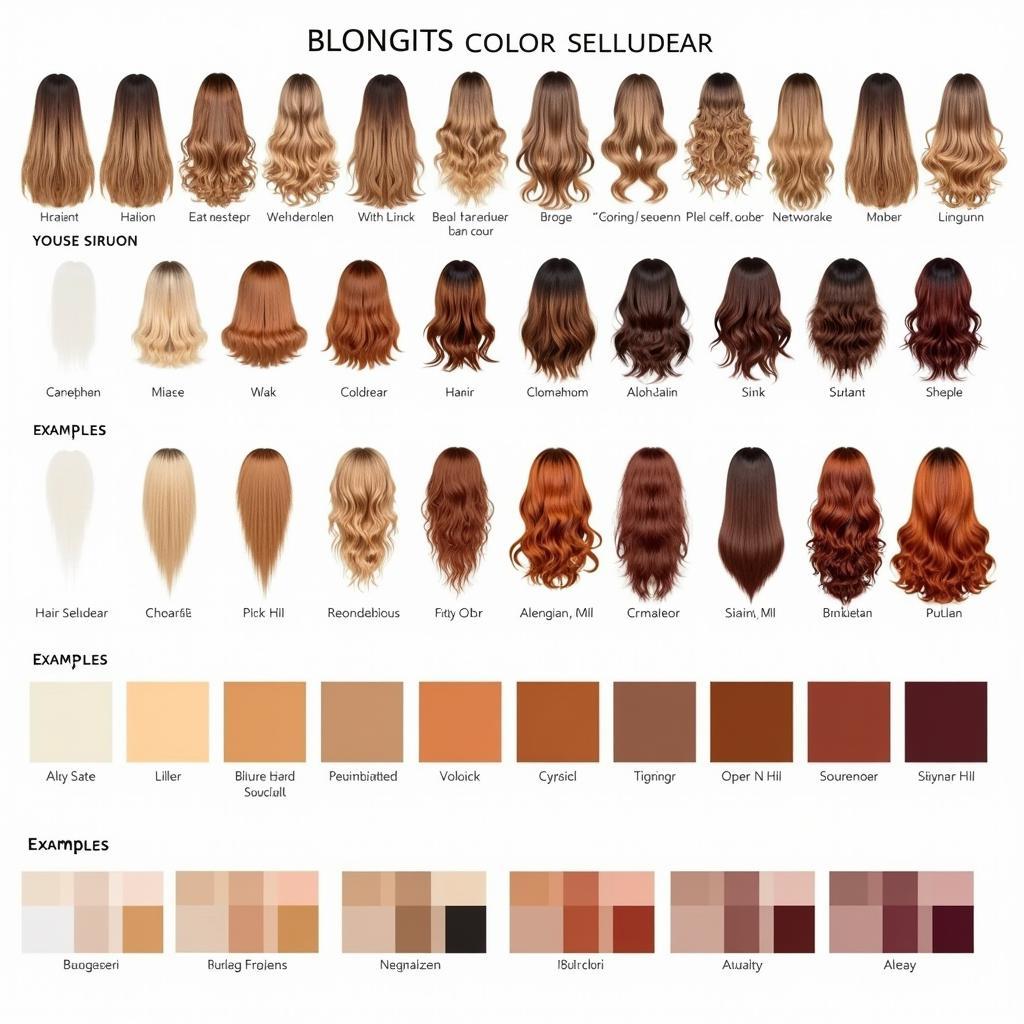Finding your perfect colors can feel like a treasure hunt. You might love a color on someone else, only to find it washes you out. “What seasonal color am I?” is a question many people ask, seeking a personalized palette that complements their natural coloring. Understanding the characteristics of each season can unlock a world of style and confidence.
Have you ever wondered why certain colors make you glow while others leave you looking drab? The answer might lie in seasonal color analysis. This system categorizes individuals into four seasons – Spring, Summer, Winter, and Autumn – based on the undertones of their skin, hair, and eyes. Knowing your season allows you to choose clothing, makeup, and even hair colors that harmonize with your natural features. Are you ready to uncover your best colors? Let’s dive in!
Understanding Seasonal Color Analysis
This method isn’t about matching your skin tone to a specific shade, but rather about identifying the overall tone and intensity of your coloring. Are your colors warm or cool? Are they bright and clear or soft and muted? These are the key questions that seasonal color analysis helps answer. Once you’ve discovered your perfect palette, getting dressed each morning becomes a joy! Are you a vibrant Spring, a cool Summer, a rich Autumn, or a dramatic Winter?
If you’re wondering how to make a mesh wreath with two colors, check out this helpful guide.
Decoding the Four Seasons
Spring
Springs typically have warm undertones and clear, bright coloring. Think golden blondes, strawberry blondes, and light-to-medium brown hair with warm highlights. Eye colors often include light blue, green, golden brown, or amber. Skin tones range from ivory to peach. Springs thrive in warm, clear colors like coral, peach, golden yellow, and periwinkle blue.
Summer
Summers are defined by cool undertones and muted, soft coloring. Ashy blondes, cool browns, and silver hair are common. Eye colors tend towards blue, grey-blue, green, or hazel. Skin tones range from pale pink to rosy beige. Summers look stunning in cool, muted shades such as powder blue, rose pink, lavender, and soft grey.
Do you want to know what hair color is best with green eyes? Check out this useful resource.
Autumn
Autumns have warm undertones and rich, deep coloring. Think auburn, red, and golden brown hair. Eye colors often include golden brown, hazel, green, or deep blue. Skin tones range from warm beige to golden brown. Autumns shine in earthy tones such as olive green, burnt orange, rust, and deep teal.
Winter
Winters are characterized by cool undertones and high contrast between their features. Hair is often dark brown, black, or white. Eye colors tend to be bright blue, emerald green, or dark brown. Skin tones range from pale porcelain to deep olive. Winters look striking in cool, intense shades such as black, navy, emerald green, and fuchsia.
Interested in learning the time difference between Colorado and California? Find the answer here.
Which Season Sounds Most Like You?
Determining your season can be tricky. Professional color analysis is an option, but you can also try draping different colored fabrics near your face to see which ones enhance your complexion. Pay attention to which colors make your eyes sparkle and your skin glow. Which colors make you look washed out or tired?
 Seasonal Color Analysis Chart for Spring, Summer, Autumn, and Winter
Seasonal Color Analysis Chart for Spring, Summer, Autumn, and Winter
“Choosing the right colors can make a dramatic difference in how you look and feel,” says renowned image consultant, Amelia Hughes. “When you wear colors that harmonize with your natural coloring, you appear healthier, more vibrant, and more confident.”
Fine-Tuning Your Palette
Once you’ve identified your season, don’t be afraid to experiment within your palette. Not every shade within a season will be perfect for everyone. You might find that certain shades within your season suit you better than others. Play around with different tints, tones, and shades to discover your absolute best colors.
Wondering if you can color your hair two days in a row? Click here for more information.
“Don’t be afraid to step outside of your comfort zone and try new colors within your season,” encourages celebrity stylist, Julian Vance. “You might be surprised at how much you love a shade you never thought you’d wear.”
What Seasonal Color Am I? Conclusion
Understanding your seasonal color palette can transform your wardrobe and boost your confidence. By choosing colors that complement your natural coloring, you can achieve a polished and harmonious look that makes you look and feel your best. So, what seasonal color are you? Embark on this colorful journey of self-discovery and unlock your true radiance!
FAQ
- Can my seasonal color change? Generally, your season stays the same throughout your life, though slight shifts can occur with age.
- Is it necessary to stick strictly to my season’s colors? No, it’s a guideline, not a rule. Feel free to incorporate other colors you love, but use your seasonal palette as a foundation.
- How can I determine my season if I have neutral undertones? Look at the overall intensity and warmth/coolness of your coloring. You might fall into a soft Summer or a soft Autumn.
- Can men benefit from seasonal color analysis? Absolutely! The principles apply to everyone, regardless of gender.
- What if I don’t fit neatly into one season? You might be a blend of two seasons, such as a Spring/Summer or an Autumn/Winter.
Curious about the distance between Colorado and Kentucky? This article provides details.
Need Help Discovering Your Season?
Contact us! Phone Number: 0373298888, Email: [email protected] or visit us at 86 Cầu Giấy, Hanoi. Our customer service team is available 24/7. We can help you unlock the secrets of your personal color palette and create a wardrobe that makes you shine.
